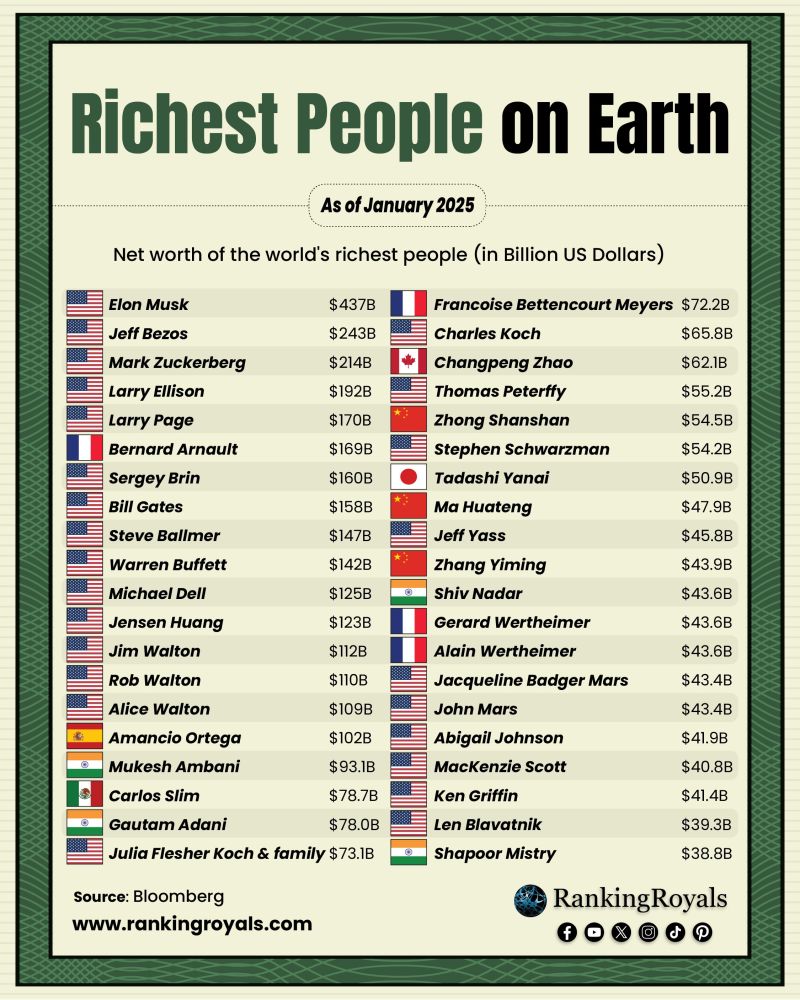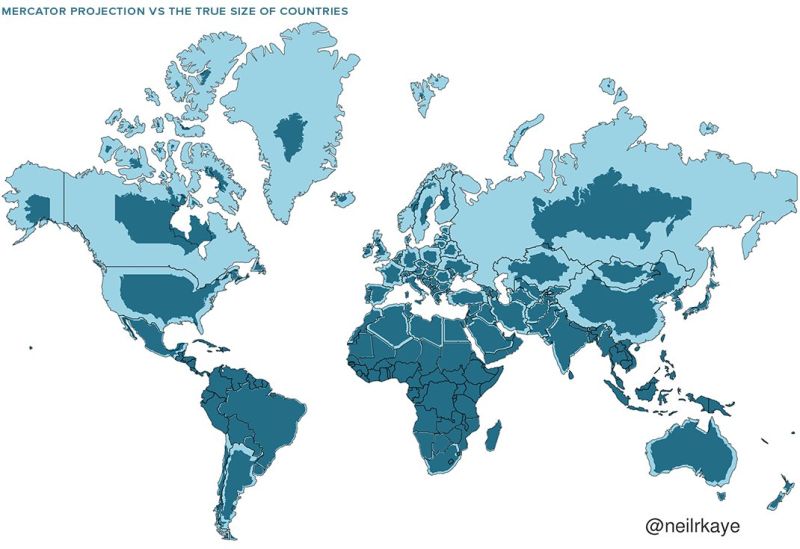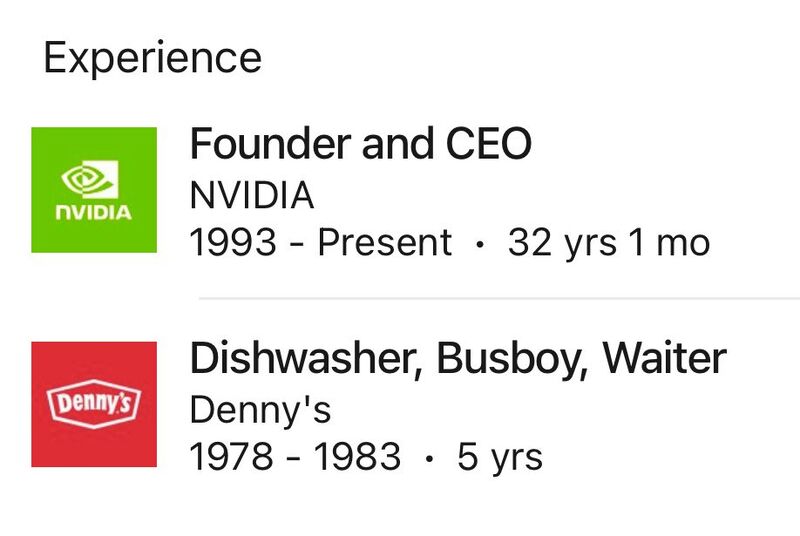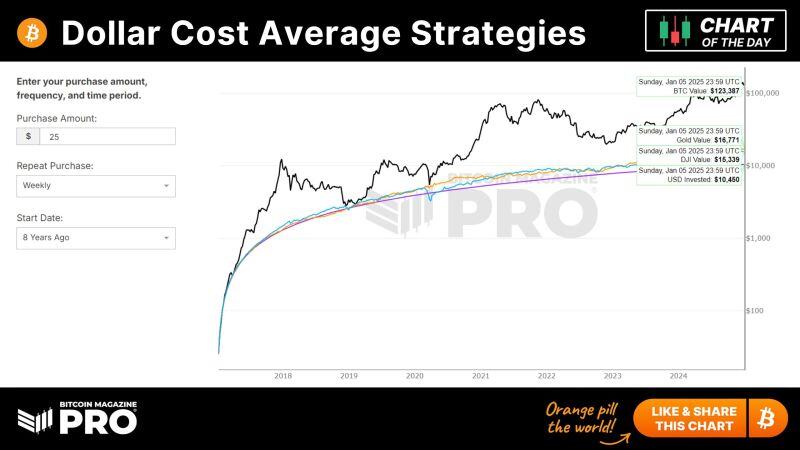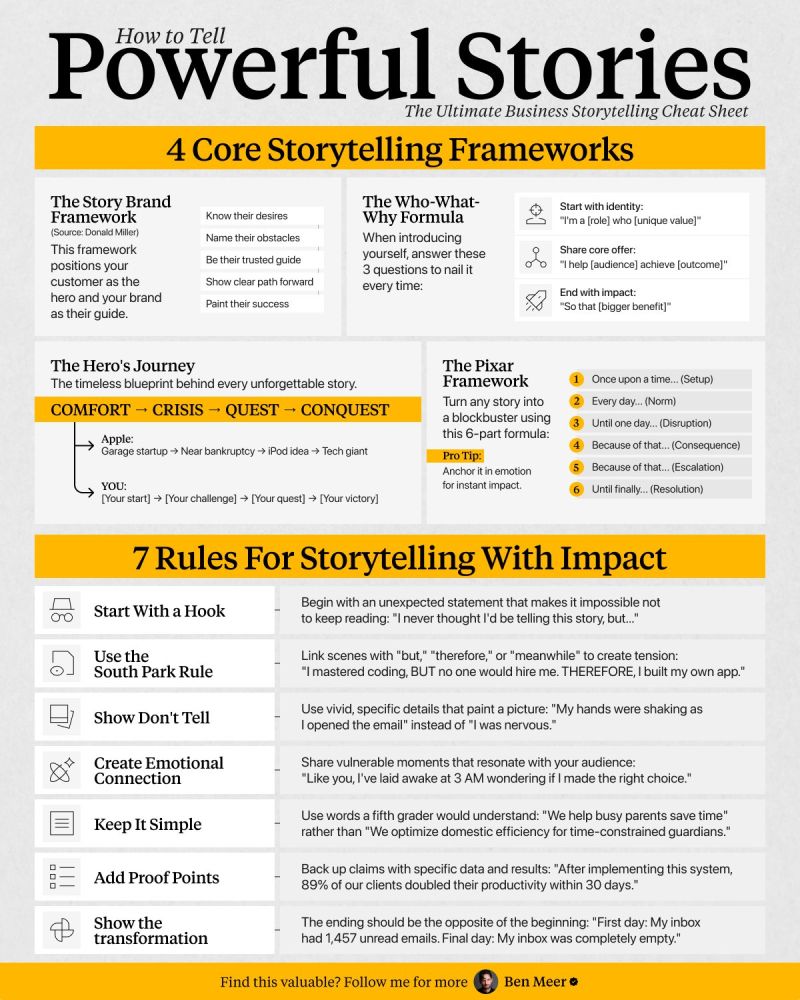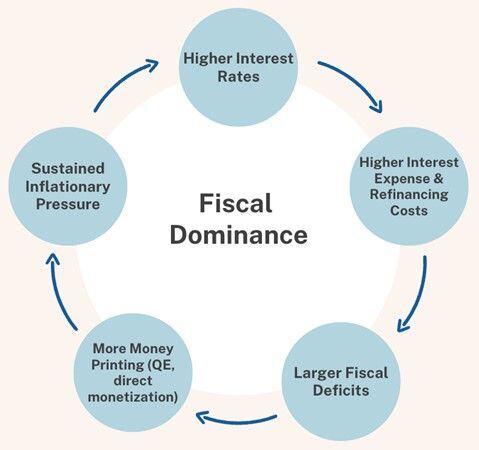Straight from the Desk
Syz the moment
Live feeds, charts, breaking stories, all day long.
- All
- equities
- United States
- Macroeconomics
- Food for Thoughts
- markets
- Central banks
- Fixed Income
- bitcoin
- Asia
- europe
- investing
- technical analysis
- geopolitics
- gold
- Crypto
- AI
- Commodities
- Technology
- nvidia
- ETF
- earnings
- Forex
- china
- Real Estate
- banking
- oil
- Volatility
- magnificent-7
- energy
- apple
- Alternatives
- emerging-markets
- switzerland
- tesla
- United Kingdom
- assetmanagement
- Middle East
- amazon
- russia
- ethereum
- microsoft
- ESG
- meta
- Industrial-production
- bankruptcy
- Healthcare
- Turkey
- Global Markets Outlook
- africa
- Market Outlook
- brics
Net Worth of the World's Richest People as of January 2025.
Source: RankingRoyals @RankingRoyals on X·
ELON MUSK BUYING RIGHTS TO TIKTOK?
Chinese officials are evaluating a potential option that involves Elon Musk acquiring the US operations of TikTok if the company fails to fend off a ban - Bloomberg thru Evan on X
Map of the actual size of each country
Source: Epic Maps 🗺️ @theepicmap
An interesting Graph📈
The US has a big generational divide on willingness to fight for their country if it came to a war. The young are considerably less willing to do so than the old. This is different from most other countries. Source: @rubenbmathisen on X
The CEO of Nvidia has a legendary LinkedIn profile:
Source: Brew Markets @brewmarkets
If you started dollar cost averaging in 2017 with just $25 a week, your $10,450 invested would have returned:
⛏️ Gold: $16,770.50 🏦 Stocks: $15,339.39 🔥 Bitcoin: $123,386.57 Disclaimer: Past results do not guarantee future returns Source: Bitcoin Magazine
Storytelling is a high ROI skill.
But it's massively overlooked (in life and business). 11 storytelling tips to accelerate your career by Ben Meer @SystemSunday on X:
There have been many definitions of fiscal dominance over the years, but one that explains it well comes from Daniel J. Ford:
"Fiscal dominance is an economic condition that occurs when a country’s debt and deficit levels are sufficiently high that monetary policy ceases to be an effective tool for controlling inflation. In fact, persistently high interest rates in an environment of perpetually large deficits actually risk exacerbating inflation". Another definition: "Fiscal dominance occurs when fiscal deficits become as significant as, or more important than, private sector lending and monetary policy in driving economic activity". Source: Lyn Alden
Investing with intelligence
Our latest research, commentary and market outlooks


